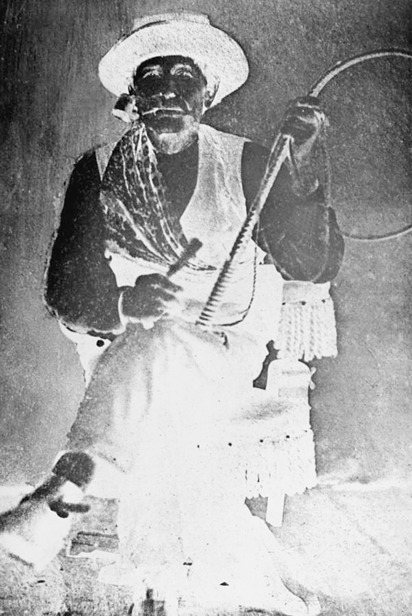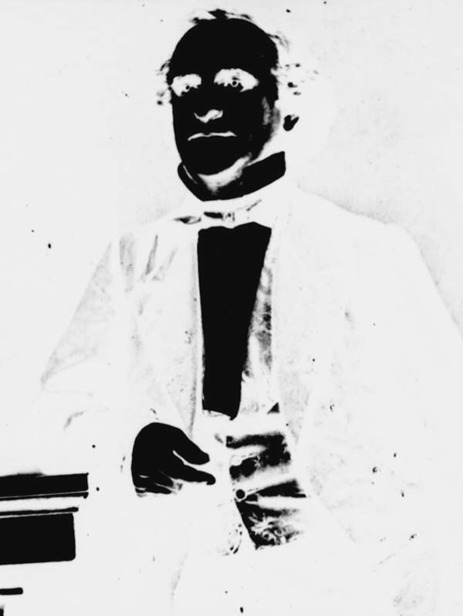Read The History of Florida Online
Authors: Michael Gannon
Tags: #History, #United States, #State & Local, #Americas
The History of Florida (49 page)
of Hillsborough County, where only ninety-six permanent residents had
been counted in 1840. Families that had moved from Virginia and Maryland
to Middle Florida in the 1820s and had prospered there until the national
depression of 1837 moved to their second Florida frontier after passage of
the AOA. Sons of the Braden, Gamble, and Craig families moved their slave
communities to tracts along the Manatee River, where a longer growing
season protected sugarcane from the early frosts that hindered sugar pro-
proof
duction in north Florida. Men like Jacob Summerlin drove herds of cattle
from northeast Florida to graze free on the vast open range of Hillsbor-
ough County. By 1860, more than 30,000 head of cattle roamed the inland
grasslands and more than 900 people lived among the prosperous Manatee
River plantations. Historian Janet Snyder Mathews has characterized the
Hil sborough settlements as “the edge of wilderness” and an important part
of “a new American frontier.”2
The Gambles and Bradens were frontier aristocrats, not the “plain folk”
who pioneered in Florida from adjacent southern states after 1842. Histo-
rian James M. Denham has written with understanding of the culture of
the Florida “crackers” who brought their families and farm animals to Flor-
ida seeking affordable and fertile land. Highly individualistic and mobile,
fiercely dedicated to popular democracy, general y possessing antipathy
toward Native Americans and African Americans, and quick to anger, the
crackers would become the majority of the population in farming regions
of the state.
Seminole removal also contributed to the growth and development of
northeast Florida. The rural plantations had been periodical y disrupted by
Indian attacks between 1835 and 1842, but the stimulus of a military garrison

U.S. Territory and State · 233
proof
Jacob Summerlin, known as the King of the Crackers. Summerlin was born in Alachua
County in 1820. As a young man, he moved to central Florida and started a career as a
cattle rancher by rounding up wild cattle that roamed the Florida grasslands. Cracking
long whips, Summerlin and his men drove the cattle to ports on the Gulf for shipment
to Cuba. Prior to the Civil War, Summerlin grazed more than 15,000 cattle in the Peace
and Kissimmee River valleys. Courtesy of the State Archives of Florida,
Florida Memory
,
http://floridamemory.com/items/show/26245.
and supply post at Jacksonville led to the doubling of Duval County’s popu-
lation between 1830 and 1840. After 1842, wagon caravans of settlers and
their slaves rolled through Jacksonville with the tools and supplies needed
to build homes in the backcountry that became Clay County and beyond to
the Alachua Prairie. The wagons soon rolled farther south and west, carry-
ing Georgians and South Carolinians to cotton plantations in Marion and
Columbia Counties. A record 530 vessels carried exports from Jacksonville
in 1855. Reports of streets jammed with wagons and carts prompted the
234 · Daniel L. Schafer
editor of the
Jacksonvil e
News
to boast on 18 December 1856 that Florida’s
“crop is greater in quantity of cotton, and aggregate value, than any State in
proportion to its population.”
By 1842, three steam-powered sawmil s were cutting lumber on the St.
Johns River, supported by commerce with the military. On October 11, 1851,
a newsman reported in the
Florida
Republican
that Jacksonvil e was “the
largest lumber market in the South.” Three years later, twenty sawmil s were
producing boards for export. Mil s on the Nassau and St. Marys Rivers
and Black Creek also cut yellow pine and shipped Florida lumber to ports
throughout the world. Late in the 1850s, railroads tapped new timberlands,
sustaining an economic enterprise of major significance and encouraging
an influx of additional small farmers.
As the loggers cut the pine, new homesteads were cleared for settlement.
In 1860, Clay County was a land of white yeoman farmers; 73 percent of its
population was white, 93 percent of whom had been born in slave states.
Only 19 percent of the heads of Clay County households owned slaves, and
more than half of all bondsmen were held at only six estates.
Whites were 57 percent of Duval County’s 5,074 residents in 1860. Slaves
in Duval numbered 2,046 (40 percent), and free black persons totaled 164
(3 percent). Approximately 41 percent of al Duval residents lived in the
proof
City of Jacksonville in 1860, working at diverse occupations that reflected
the expansion of the region’s economy. There were slightly more whites than
blacks among the 2,128 residents of the town, and 44 percent of the heads of
household had been born in the North or in foreign countries. Outside the
town, however, four of every five white household heads were from slave-
holding states. Just north of Jacksonville, the growing town of Fernandina,
with a population of 1,360 residents in 1860, showed similar patterns.
By the 1840s and 1850s, governmental affairs in Florida were dominated
by a coalition of elites known as the “Nucleus,” led by Richard K. Cal . This
combination of early Monroe and Jackson appointees and wealthy migrants
from Virginia who had settled in Middle Florida had gained control of the
Florida Land Office as well as executive and judicial posts throughout the
territory. Often land speculators, slave owners, and cotton planters, as mem-
bers of the Whig Party they advocated government-assisted internal im-
provements and liberal bank charters. Their banking policies evolved into
the most controversial political issue of the territorial years.
Between 1831 and 1835, the Legislative Council approved bank charters
for groups in Pensacola, Tal ahassee, and St. Augustine. Directors of the
banks, their stockholders, and the individuals who received loans were all
U.S. Territory and State · 235
members of the ruling elite. With inflated evaluations of their property from
bank officers who were friends and relatives, planters traded mortgages for
stock in the Union Bank of Tal ahassee and then received generous loans
to finance additional purchases of land and slaves. Additional capital came
from bond sales to investors in New York City, Boston, Amsterdam, and
London, sales made possible by the “good faith” promise of the Legislative
Council to back the bonds. Cal and his associates had been fol owers of
Old Hickory in earlier years, but in Florida they evolved into a conservative
ruling class opposed to the policies advocated in the 1830s by the Jacksonian
Democrats.
In less troubled times, the banks may have prospered, but the bitterly
cold winter of 1835 that destroyed the citrus industry in East Florida, cou-
pled with the economic dislocations caused by the Second Seminole War
and the repercussions of the Panic of 1837, led to bank failures through-
out the nation. In Florida, the legislative council passed laws to tax Florida
residents as a means to pay interest on the “faith bonds” as the council had
promised to bond holders. Outraged Florida residents condemned the laws
and taxes as evidence that politicians were corrupt and protecting only the
interests of the “Nucleus.”
Men outside of this circle of influence were also eager to acquire proper-
proof
ties and business, and became resentful of the antidemocratic politics of the
Florida elite. They denounced inherited privileges and monopolies that de-
nied opportunities to the common man. In response, leaders like Robert R.
Reid, David Levy, and James D. Westcott formed the Jacksonian Democratic
Party as a vehicle to unseat the entrenched aristocracy.
The Florida “Bank War” opened on an unlikely front: as the feature issue
in the drive for statehood that Richard Call and his Whig Party colleagues
spearheaded in the mid-1830s. Call pointed to the millions of acres of land
in the territory, control ed by Congress, that could be granted to Florida
and used by state officials as inducements for internal improvements, and
claimed that wealth, population growth, and economic development were
certain to come to Florida with statehood. When a referendum in May 1838
produced a majority of voters in favor of statehood, Governor Call autho-
rized elections of delegates to a constitutional convention to be held in De-
cember at St. Joseph, the new Gulf coast port near Apalachicola. During the
elections of delegates to the convention, candidates pledged to antibank po-
sitions denounced speculators and aristocrats who profited from the banks
and excluded the laboring classes. The antibank delegates won the majority
of the seats.
236 · Daniel L. Schafer
The leading men of the territory assembled at St. Joseph on 3 December.
Future governors Robert R. Reid, Thomas Brown, and Wil iam Marvin were
in attendance, as were future U.S. senators from Florida James D. Westcott,
Jackson Morton, and David Levy Yulee (who had adopted his family’s hon-
orary Moorish title). Delegates debated until 11 January 1839, when a consti-
tution was approved containing provisions that severely restricted banking
policies. It was a clear repudiation of the conservative elite. In a referendum
conducted in May, voters of the territory approved the constitution, but the
ratification campaign was again controversial and closely contested.
It was the leadership of congressional delegate Yulee that most directly
led to admission of Florida to the Union. He wrote numerous letters, gave
countless speeches, and published an influential pamphlet in support of
statehood. A convincing theme in the speeches was Yulee’s claim that once
statehood was approved, Congress would make federal lands available to
support railroad construction and other internal improvement projects that
would result in national prominence for Florida and additional population
growth.
In Washington, Yulee worked through southern congressmen, remind-
ing them that admitting Florida would correct the imbalance of free and
slave states expected to occur in 1846 with the admission of Iowa as a free
proof
state. In January 1845, the House of Representatives reported out a bill call-
ing for admission of Iowa and Florida that was approved and signed by
President John Tyler. On 3 March 1845, Florida became the twenty-seventh
state of the United States of America.
Governor John Branch declared 26 May 1845 as the date for election of
officers for the new State of Florida. Voters chose Democrats Wil iam D.
Moseley, a planter from Jefferson County for governor, and David Yulee for
congressman. Democrats also won majorities in both houses of the General
Assembly, and at the initial meeting in June 1845 chose Yulee and David
Westcott as Florida’s first United States senators. By adjournment on 26 July,
the assembly had created the executive and judicial structure of the new
state and passed tax and revenue bil s to support it.
Democrats remained in control of Florida politics until after the Civil
War. The party became adamantly insistent on states’ rights and made
increasingly radical demands for secession from the Union. While some
twentieth-century Floridians have argued that secession and the Civil War
were not related to defense of the institution of slavery, political leaders in
Florida during the late antebel um years would have unapologetical y and
strenuously disagreed. “Southern rights” to Florida’s Democrats meant the

